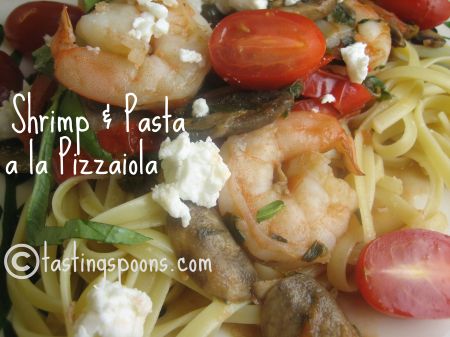
This recipe requires the telling of a travel-related story. Some years ago (I’m guessing it was about 15) my DH and I went on a white-water rafting trip in Idaho. My DH was quite surprised when I mentioned the trip to him. What, he said? You WANT to go camping in the remote wilderness? I said, well, yes, because the guides do all the work, all the cooking, and we’re just there to immerse ourselves in the scenery and enjoy the food. The relaxation. The clean air.
I have fond memories of my childhood when my parents and I went camping in the High Sierras (the inland ridge of mountains that divide, almost, California from Nevada). My dad loved to fish; my mom not so much, but she enjoyed lazy days in the camp, reading magazines, a book, playing games of Scrabble (which I still love to this day). Sometimes I went fishing with my dad, but usually got bored after awhile. I had my own pole, usually a hand-me-down from my dad. We fished for trout in those cold, crisp mountain streams, seeking out the deep pools of water, near rocks, where the trout loved to hide. We tent camped, but my parents did 99% of the work, so I didn’t realize until I was an adult about how much effort was involved in setting up the camp, or cooking meals. Or doing dishes. Or laundry. Or even the packing that went on at home for a couple of weeks before the trip.
Since those days I haven’t camped much, and would prefer to do it in a camper or trailer if the option were to come up. My DH, however, has no interest in camping, even in a luxury vehicle. He likes water. The ocean, mostly. (We have a sailboat, and that’s HIS idea of camping.) But when I suggested the Idaho river-rafting trip, maybe it was the water that intrigued him. At any rate, we went, and signed up for a trip that was not only a “gourmet” trip, but a wine-tasting trip as well. Salmon River Outfitters had been written up in Gourmet. That’s all the mattered to me – if Gourmet thought it was a great trip with great food, surely we would too. And indeed we did. SRO has new owners, but I’d suspect they would have continued the tradition.
I could write up an entire post about the week-long trip itself (the wildlife, the hikes, the campsites, the conviviality of the small group, the thrill of the rapids, and even getting to the imbarkation point too) but for now I’ll just talk about the food. To say I was amazed at the food is an understatement. Here we were, out in the middle of nowhere (on the Salmon River, the South Fork, with nothing but ice chests of food and camping gear – no roads – no civilization whatsoever – no supply boat or car to deliver food to us) and the group of guides (four on our trip). We rafted the river for a couple or three hours in the mornings, then they’d spy a favorite sandy bank and our three rafts would pull in. They’d set up comfy chairs right at the riverside, bring in the potty box (which went with us on the trip from beginning to end) and set up a small secluded toilet for the group, then they’d start preparing lunch. Lunch was usually cold food – salads, sandwiches, and maybe brownies, fruit and cookies, hot coffee in thermoses from breakfast, soft drinks. We stopped long enough to enjoy more of the scenery and let our lunches settle, then we’d pile back into the rafts and off we’d go for the afternoon run. Another couple or three hours on the river, more rapids perhaps, maybe a hike into an abandoned gold rush era village, and we’d stop again for the day. They had their favorite spots. There are a few other river outfitters plying the same waters (the state mandates a limited number of rafts on the river at any time), so everyone jockeys for their favorite sites. (And, incidentally, every single minute amount of detritus we had on this trip – dirty tissues, paper towels, wrappers, was all taken along on the trip and disposed of properly – nothing, absolutely nothing – was left on the river or in campsites.)
The weather was unseasonably cold the year we went (in July), and we were very, VERY limited in what we could take with us (they had mailed us a small waterproof cloth duffle bag and everything, absolutely everything we took had to fit into this bag). We slept in sleeping bags they provided with a small 2-man tent that goes up in nothing flat. We were required to set up our own tents and if rain threatened, we needed to dig small drainage ditches around the tent. We did have rain a couple of times, so it was a good thing we dug the ditches. A couple went along on that trip from Granite Springs winery (in California gold country, and now part of Latcham winery), and every night they provided some delightful wines for all of us to enjoy before and during dinner. The meals the guides prepared were positively amazing. I don’t remember now what all they made, but they were outstanding. The guides set up a couple of small camping prep tables and two kerosene stoves, and from those limited resources, they prepared meals you’d think were from a gourmet restaurant.
So, one night, they made this pasta dish. And everyone just adored it, me included. Toward the end of the trip they told us they had a “book” they’d sell us for a fee. It contained the story of Salmon River Outfitters and some, but not all of the recipes, but the most popular ones, this pasta dish one of them. So, of course, I had to buy the book. And I’ve made this pasta numerous times since, and never fail to remember the fun we had on that river rafting trip, and how scrumptious this tasted as we sat by the burbling river, listening to the hawks, the birds, the bees, spotting eagles soaring at high elevations too.
printer-friendly PDF
Shrimp & Pasta a la Pizzaiola
Recipe: Salmon River Outfitters, Idaho
Servings: 8
Cook’s Notes: this dish does take some moderate amount of prep. Lots of cutting and chopping, but once done, the dish comes together quickly. I added a little bit of chicken broth to the sauce just to give a bit more fluid to it. If you end up mixing up the two parts of the sauce, don’t worry – I’ve done it myself, and it doesn’t seem to matter. Be sure to use both Feta and Romano cheese (don’t skip, because the Feta is an important component).
2 pounds medium shrimp — raw
1 teaspoon pickling spice
2 pounds pasta [my choice is linguine]
MUSHROOM SAUCE:
1/4 pound mushrooms — fresh, sliced
2 teaspoons olive oil
1/4 cup fresh basil — sliced
1/4 cup fresh parsley — minced
1 clove garlic — minced
2 tablespoons fresh lemon juice
1 cup cherry tomatoes
2 tablespoons capers
PIZZAIOLA SAUCE:
3 tablespoons olive oil
2 cloves garlic — minced
1/2 whole red bell pepper — thinly sliced
3 whole tomatoes — chopped
1 teaspoon fresh oregano — minced
1 dash salt
1 dash pepper
1 teaspoon sugar
1/4 cup dry red wine
TOPPINGS:
3 1/2 ounces Feta cheese — crumbled
1/3 cup Romano cheese — or Parmegiano, shredded
3 tablespoons basil leaves — sliced
1. Bring 1 quart of water to a boil and add pickling spice and shrimp. Simmer for 3-4 minutes, or until shrimp turns pink and curls. Cool under cold running water, peel and devein.
2. Heat olive oil in large skillet. Add mushrooms and garlic and sauté for about 5 minutes. Add basil and parsley, then shrimp and lemon juice, and cook for about 5 minutes. Add Piazzaiola Sauce and heat through.
3. In a large kettle, bring a large quantity of water to a boil and add the pasta of your choice and cook until al dente. Rinse in hot water, drain briefly, then toss with shrimp/sauce mixture. Add Feta, capers and cherry tomatoes, then sprinkle with Romano and serve immediately.
4. PIZZAIOLA SAUCE: In a large kettle heat olive oil until a light haze forms over it. Remove from heat and add garlic and bell peppers. Stir while it cooks, off the flame. Peel, seed and chop the tomatoes. Add oregano, salt, pepper, basil, sugar and red wine. Add to mushroom mixture.
Per Serving: 679 Calories; 14g Fat (19.2% calories from fat); 42g Protein; 92g Carbohydrate; 4g Dietary Fiber; 188mg Cholesterol; 436mg Sodium.






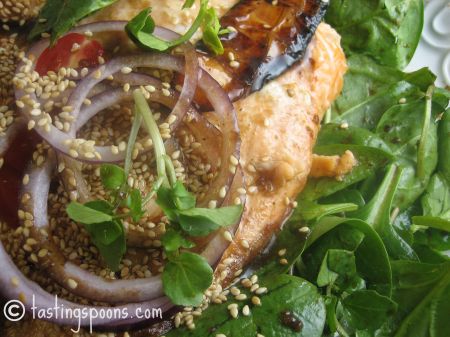

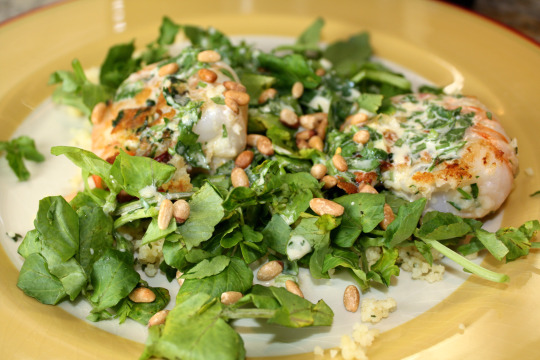
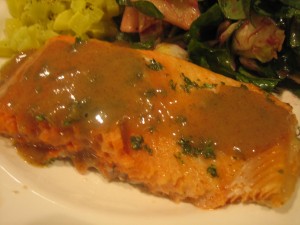
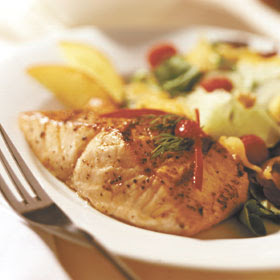
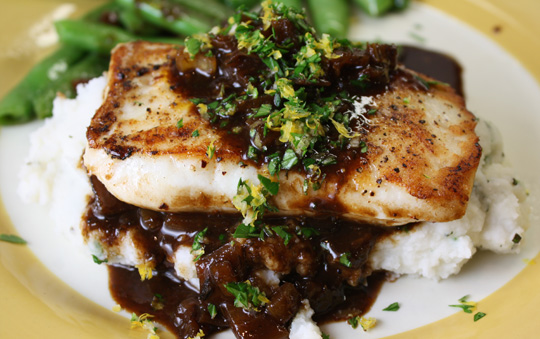
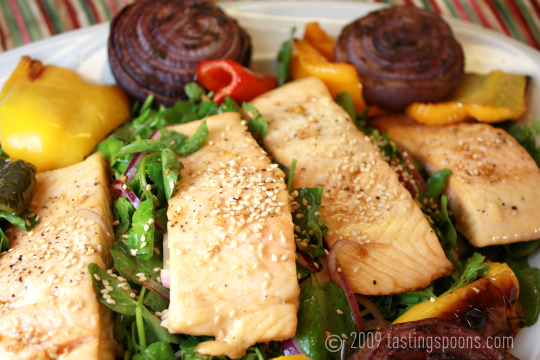 I’ve told you before about Chris Schlesinger. His book, The Thrill of the Grill, is one of my favorite cookbooks. This recipe came from there. This is the fellow I spoke to, telling him my favorite recipe from his book was the Asian Slaw and he gave me this face. If you haven’t read that story, click
I’ve told you before about Chris Schlesinger. His book, The Thrill of the Grill, is one of my favorite cookbooks. This recipe came from there. This is the fellow I spoke to, telling him my favorite recipe from his book was the Asian Slaw and he gave me this face. If you haven’t read that story, click 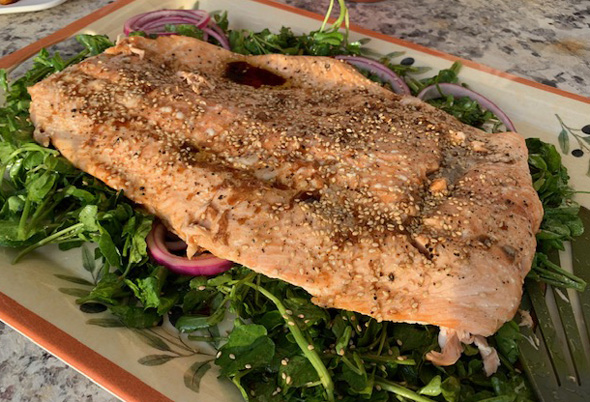
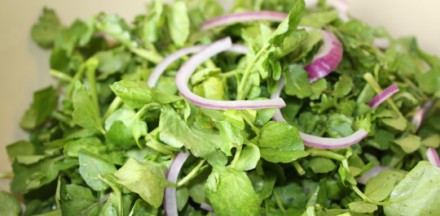 I do need to talk a bit about
I do need to talk a bit about 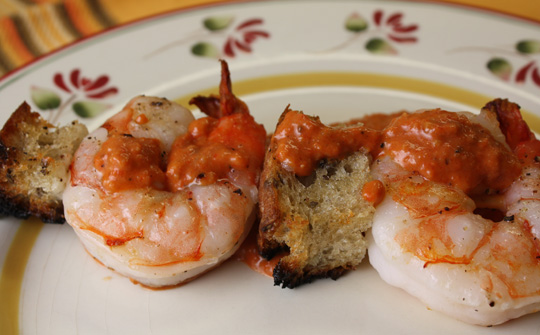
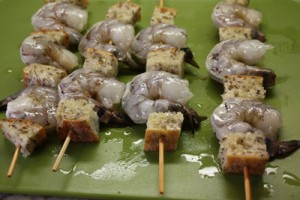
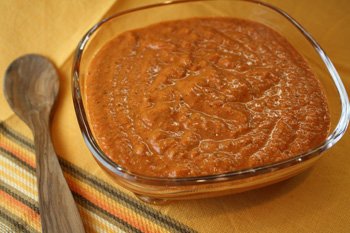
Leave a Comment!